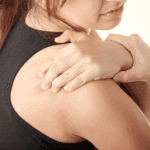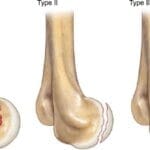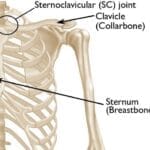Orthopaedic surgery and rehabilitation medicine are deeply interconnected, both playing crucial roles in patient recovery and long-term health outcomes. This editorial reflects on recent research and developments in orthopaedic rehabilitation, specifically reviewing literature from March 2023 to February 2024. The papers referenced are from esteemed publications such as The American Journal of Sports Medicine, Archives of Physical Medicine and Rehabilitation, The Journal of Bone & Joint Surgery, Pain Medicine, and others. This comprehensive review covers various aspects of rehabilitation, from shoulder and elbow treatments to advancements in orthobiologics and prosthetic technologies.
Shoulder Rehabilitation
Myofascial trigger points, frequently accompanying subacromial pain syndrome, have been shown to respond positively to dry needling. This therapy, integrated with other conservative treatments, offers pain relief and reduces disability for as long as six months. Griswold and colleagues concluded through systematic review and meta-analysis that combining dry needling with traditional approaches is superior to conventional therapies alone.
Another noteworthy study by Kandemir et al. explored the use of pulsed electromagnetic field therapy for shoulder impingement syndrome. Compared to sham therapy combined with exercise, pulsed electromagnetic field therapy significantly improved pain levels, range of motion, and quality of life at 12-week follow-ups, though no notable differences in muscle strength were observed between the two groups.
In a randomized controlled trial, ElGendy and colleagues examined the effects of extracorporeal shockwave therapy (ESWT) on shoulder impingement syndrome compared to local corticosteroid injections. While physical therapy with corticosteroids yielded no significant improvements after 12 weeks, ESWT demonstrated considerable benefits in shoulder internal rotation and subacromial space width, making it a superior long-term solution.
Angileri et al.’s systematic review and meta-analysis compared operative and non-operative interventions for chronic calcific tendinitis of the rotator cuff. They found that radial ESWT, ultrasound-guided needling, and surgical approaches all resulted in pain reduction and improved shoulder function. However, surgical interventions offered better shoulder functional outcomes, especially in patients with substantial calcium deposit resolution post-treatment.
Lastly, Feusi et al. explored the role of vitamin C as a potential low-cost treatment for adhesive capsulitis in a rat model. Prophylactic administration of vitamin C showed a reduction in the thickening of the axillary fold, suggesting its possible use in preventing secondary adhesive capsulitis in human patients undergoing shoulder surgery.
Elbow Rehabilitation
Corticosteroid injections have long been used to treat lateral epicondylitis (tennis elbow), but repeated injections raise concerns about potential tendon damage. Ha et al. investigated the effects of repeated preoperative corticosteroid injections on postoperative outcomes following lateral epicondylitis surgery, revealing that repeated injections do not significantly affect postoperative results, alleviating previous concerns about adverse long-term effects.
In a systematic review by Gao et al., various injection treatments for carpal tunnel syndrome were evaluated. PRP injections were found to be more effective in relieving pain and improving function compared to corticosteroids and dextrose injections, although all three treatments outperformed placebo injections. In a related study, Vongvachvasin and colleagues found that focused ESWT produced significant improvements in patients with moderate-to-severe carpal tunnel syndrome when combined with conservative treatments like splinting and activity modification.
Ultrasound-guided percutaneous carpal tunnel release has gained attention for its potential to reduce recovery times in patients with carpal tunnel syndrome. Although current studies provide only limited evidence, the approach appears to be a safe and effective option for some patients.
Hip Rehabilitation
For patients with femoroacetabular impingement (FAI) syndrome, a combined approach of ultrasound-guided corticosteroid injections and structured rehabilitation programs yielded significant improvements in hip function. Ebert et al. demonstrated that while some patients still required surgery, those who did not exhibited long-term improvements in strength and range of motion.
Husen et al. compared long-term outcomes of nonoperative versus operative treatments for FAI, finding that nonoperative management led to higher progression rates of osteoarthritis. This suggests that early surgical intervention may prevent long-term joint degeneration.
Research on post-surgical rehabilitation also revealed that the optimal duration for physical therapy after hip arthroscopy for FAI appears to be around 40 sessions. Kaplan et al. noted that patients who underwent this amount of therapy showed significantly better functional outcomes compared to those who completed fewer sessions.
Knee Rehabilitation
Nonoperative treatment of anterior cruciate ligament (ACL) injuries has long been debated. Hellberg et al. followed patients who had sustained ACL tears more than 30 years earlier. While 75% had developed radiographic osteoarthritis, only 38% reported symptoms, and knee function remained relatively intact for most individuals. Kinesiophobia, or the fear of re-injury, plays a role in the success of ACL rehabilitation. Ohji et al. found that athletes with higher levels of kinesiophobia exhibited impaired preparatory muscle activation, increasing their risk of re-injury. Elabd et al. demonstrated that combining an accelerated rehabilitation protocol with conventional approaches post-ACL surgery improved both pain management and functional outcomes in athletes.
Foot and Ankle Rehabilitation
Dextrose prolotherapy, a low-cost treatment for chronic plantar fasciopathy, has demonstrated efficacy in short-term pain reduction and functional improvement. Systematic reviews by Chutumstid and Fong confirmed that prolotherapy improves outcomes compared to saline injections but may be less effective than corticosteroid injections for short-term pain relief. In another study, the combination of extracorporeal shockwave therapy and local vibration therapy led to improved pain and foot function in patients with plantar fasciopathy.
Pain Management
Advancements in pain management include genicular nerve radiofrequency ablation (RFA) for chronic knee pain. Vanneste et al. found that both cooled and conventional RFA techniques effectively reduced pain in patients with osteoarthritis, with no significant difference in efficacy between the two methods.
Extracorporeal shockwave therapy has also been validated as a successful noninvasive treatment for myofascial pain syndrome. Avendaño-López and colleagues concluded that ESWT is more effective than traditional therapies like dry needling, exercise, and laser therapy, though no significant differences were found between ESWT and other modalities such as infiltration therapy.
Orthobiologics
PRP has gained considerable attention for its role in treating musculoskeletal injuries. A systematic review by Hohmann et al. compared PRP and corticosteroid injections for lateral epicondylitis, concluding that while corticosteroids provide better short-term results, PRP offers superior long-term benefits. Similar results were observed in rotator cuff disease, with PRP providing enhanced long-term recovery compared to corticosteroids.
New research on exosome therapy has also emerged. Cai et al. found that exosomes derived from mesenchymal stem cells promoted tendon-to-bone healing in a rat model of rotator cuff tendinopathy, highlighting a promising cell-free therapeutic option for chronic tendon injuries.
Prosthetics and Orthotics
Prosthetic and orthotic innovations include adaptive ankle braces that offer improved comfort and range of motion during low-velocity movements compared to traditional braces. Willwacher et al. observed that these adaptive braces could benefit athletes recovering from ankle injuries by providing better support without sacrificing performance.
Wrist supports, commonly used in gymnastics, were evaluated for their effectiveness in preventing wrist injuries. Hart et al. found that while wrist guards limit extension, they also increase wrist flexion moments, potentially increasing the risk of injury in certain scenarios.
References
- Griswold D, Learman K, Ickert E, Tapp A, Ross O. Dry needling for subacromial pain syndrome: a systematic review with meta-analysis. Pain Med. 2023 Mar 1;24(3):285-99.
- Kandemir O, Adar S, Dünder Ü, Toktaş H, Yeşil H, Eroğlu S, Eyvaz N. Effectiveness of pulse electromagnetic field therapy in patients with subacromial impingement syndrome: a double-blind randomized sham controlled study. Arch Phys Med Rehabil. 2024 Feb;105(2):199-207.
- ElGendy MH, Mazen MM, Saied AM, ElMeligie MM, Aneis Y. Extracorporeal shockwave therapy vs. corticosteroid local injection in shoulder impingement syndrome: a three-arm randomized controlled trial. Am J Phys Med Rehabil. 2023 Jun 1;102(6):533-40.
- Angileri HS, Gohal C, Comeau-Gauthier M, Owen MM, Shanmugaraj A, Terry MA, Tjong VK, Khan M. Chronic calcific tendonitis of the rotator cuff: a systematic review and meta-analysis of randomized controlled trials comparing operative and nonoperative interventions. J Shoulder Elbow Surg. 2023 Aug;32(8):1746-60.
- Feusi O, Fleischmann T, Waschkies C, Pape HC, Werner CML, Tiziani S. Vitamin C as a potential prophylactic measure against frozen shoulder in an in vivo shoulder contracture animal model. Am J Sports Med. 2023 Jul;51(8):2041-9.
- Ha C, Cho W, Hong IT, Park J, Ahn W, Han SH. Effect of repetitive corticosteroid injection on tennis elbow surgery. Am J Sports Med. 2023 Jun;51(7):1886-94.
- Gao N, Yan L, Ai F, Kang J, Wang L, Weng Y. Comparison of the short-term clinical effectiveness of 5% dextrose water, platelet-rich plasma, and corticosteroid injections for carpal tunnel syndrome: a systematic review and network meta-analysis of randomized controlled trials. Arch Phys Med Rehabil. 2023 May;104(5):799-811.
- Vongvachvasin P, Phakdepiboon T, Chira-Adisai W, Siriratna P. Efficacy of focused shockwave therapy in patients with moderate-to-severe carpal tunnel syndrome: a preliminary study. J Rehabil Med. 2024 Feb 8;56
- Chou RC, Robinson DM, Homer S. Ultrasound-guided percutaneous carpal tunnel release: a systematic review. PM R. 2023 Mar;15(3):363-79.
- Beidleman MB, Colberg RE, Beason DP, Fleisig GS. A retrospective case series study on a minimally invasive ultrasound-guided first dorsal compartment release technique for refractory De Quervain tenosynovitis. Am J Phys Med Rehabil. 2023 Mar 1;102(3):235-40.
- Ebert JR, Raymond AC, Aujla RS, D’Alessandro P. The effect of a formal nonoperative management program combining a hip injection with structured adjunctive exercise rehabilitation in patients with symptomatic femoroacetabular impingement syndrome. Am J Sports Med. 2023 Mar;51(3):694-706.
- Husen M, Leland DP, Melugin HP, Poudel K, Hevesi M, Levy BA, Krych AJ. Progression of osteoarthritis at long-term follow-up in patients treated for symptomatic femoroacetabular impingement with hip arthroscopy compared with nonsurgically treated patients. Am J Sports Med. 2023 Sep;51(11):2986-95.
- Kaplan DJ, Larson JH, Fenn TW, Allahabadi S, Malloy P, Nho SJ. Use and effectiveness of physical therapy after hip arthroscopy for femoroacetabular impingement. Am J Sports Med. 2023 Jul;51(8):2141-50.
- Hellberg C, Kostogiannis I, Stylianides A, Neuman P. Outcomes >30 years after initial nonoperative treatment of anterior cruciate ligament injuries. Am J Sports Med. 2024 Feb;52(2):320-9.
- Ohji S, Aizawa J, Hirohata K, Ohmi T, Mitomo S, Koga H, Yagishita K. Association between landing biomechanics, knee pain, and kinesiophobia in athletes following anterior cruciate ligament reconstruction: a cross-sectional study. PM R. 2023 May;15(5):552-62.
- Elabd OM, Alghadir AH, Ibrahim AR, Hasan S, Rizvi MR, Sharma A, Iqbal A, Elabd AM. Functional outcomes of accelerated rehabilitation protocol for anterior cruciate ligament reconstruction in amateur athletes: a randomized clinical trial. J Rehabil Med. 2024 Feb 22;56
- Chutumstid T, Susantitaphong P, Koonalinthip N. Effectiveness of dextrose prolotherapy for the treatment of chronic plantar fasciitis: a systematic review and meta-analysis of randomized controlled trials. PM R. 2023 Mar;15(3):380-91.
- Fong HPY, Zhu MT, Rabago DP, Reeves KD, Chung VCH, Sit RWS. Effectiveness of hypertonic dextrose injection (prolotherapy) in plantar fasciopathy: a systematic review and meta-analysis of randomized controlled trials. Arch Phys Med Rehabil. 2023 Nov;104(11):1941-1953.e9.
- On H, Yim J. Effects of local vibration combined with extracorporeal shockwave therapy in plantar fasciitis: a randomized controlled trial. J Rehabil Med. 2023 Oct 23;55
- Vanneste T, Belba A, Kallewaard JW, et al. Comparison of cooled versus conventional radiofrequency treatment of the genicular nerves for chronic knee pain: a multicenter non-inferiority randomized pilot trial (COCOGEN trial). RegAnesth Pain Med. 2023 May;48(5):197-204.
- Avendaño-López C, Megía-García Á, Beltran-Alacreu H, Serrano-Muñoz D, Arroyo-Fernández R, Comino-Suárez N, Avendaño-Coy J. Efficacy of extracorporeal shockwave therapy on pain and function in myofascial pain syndrome: a systematic review and meta-analysis of randomized clinical trials. Am J Phys Med Rehabil. 2024 Feb 1;103(2):89-98.
- Hohmann E, Tetsworth K, Glatt V. Corticosteroid injections for the treatment of lateral epicondylitis are superior to platelet-rich plasma at 1 month but platelet-rich plasma is more effective at 6 months: an updated systematic review and meta-analysis of level 1 and 2 studies. J Shoulder Elbow Surg. 2023 Sep;32(9):1770-83.
- Cai J, Xu J, Ye Z, Wang L, Zheng T, Zhang T, Li Y, Jiang J, Zhao J. Exosomes derived from kartogenin-preconditioned mesenchymal stem cells promote cartilage formation and collagen maturation for enthesis regeneration in a rat model of chronic rotator cuff tear. Am J Sports Med. 2023 Apr;51(5):1267-76.




